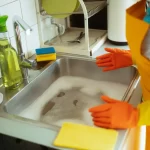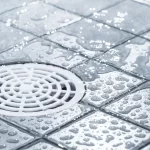Your home’s drainage system does more than carry wastewater away. It manages rain, prevents soil erosion, keeps basements dry, and protects your home’s foundation from damage caused by excess moisture. Whether it’s runoff from a storm or water from your kitchen sink, the way that liquid is redirected, drained, or absorbed plays a critical role in how well your home stands up over time. You can prevent costly repairs, identify problems early, and even prolong the long-term worth of your property by understanding and identifying where that water flows and how it gets there.
In this blog, we’ll guide you through the various types of drainage systems in Toronto homes and explain why each one is crucial for effective water management. Each component of your home’s drainage system, from gutters and catch basins to French drains and foundation systems, has a specific role in managing sewage and water flow. Learning and understanding how they work, how to maintain them, and knowing when to seek expert or professional help can make a big difference, especially when heavy rain or plumbing issues strike unexpectedly.
If you are experiencing drainage issues in your home, please contact us. Please refer to our Drain Cleaning and Drain Repair pages for additional details.
What is a House Drainage System?

A house drainage system is a network of pipes, drains, and water management components designed to collect and move water away from your house. It manages both wastewater from inside the house and rainwater or groundwater from outside of your home to maintain a functional sewer system.
Moreover, the system comprises indoor plumbing, gutters, exterior drains, and some specialized components, such as sump pumps. Each element of the system plays a role in protecting your home from water-related problems, such as foundation damage, mould growth, and erosion.
Why Drain Types Matter?
Selecting the right and appropriate drain type for your home and maintaining it isn’t just about keeping puddles at bay. This is also about ensuring optimal performance of your overall house drainage system. Poor drainage can lead to major structural disruptions and even health issues.
Correspondingly, here’s why drain types matter:
- Prevent water from pooling and soil saturation.
- Protects the foundation structure of the house
- Avoids basement flooding
- Reduces the growth of mould and mildew
- Maintains landscape integrity by directing water flow away from vulnerable areas, contributing to effective water management.
Now that you know already the relevance of drain type to your home, let’s examine the primary types of drains commonly used in residential properties.
1. Runoff Drains: Managing Roof and Surface Water
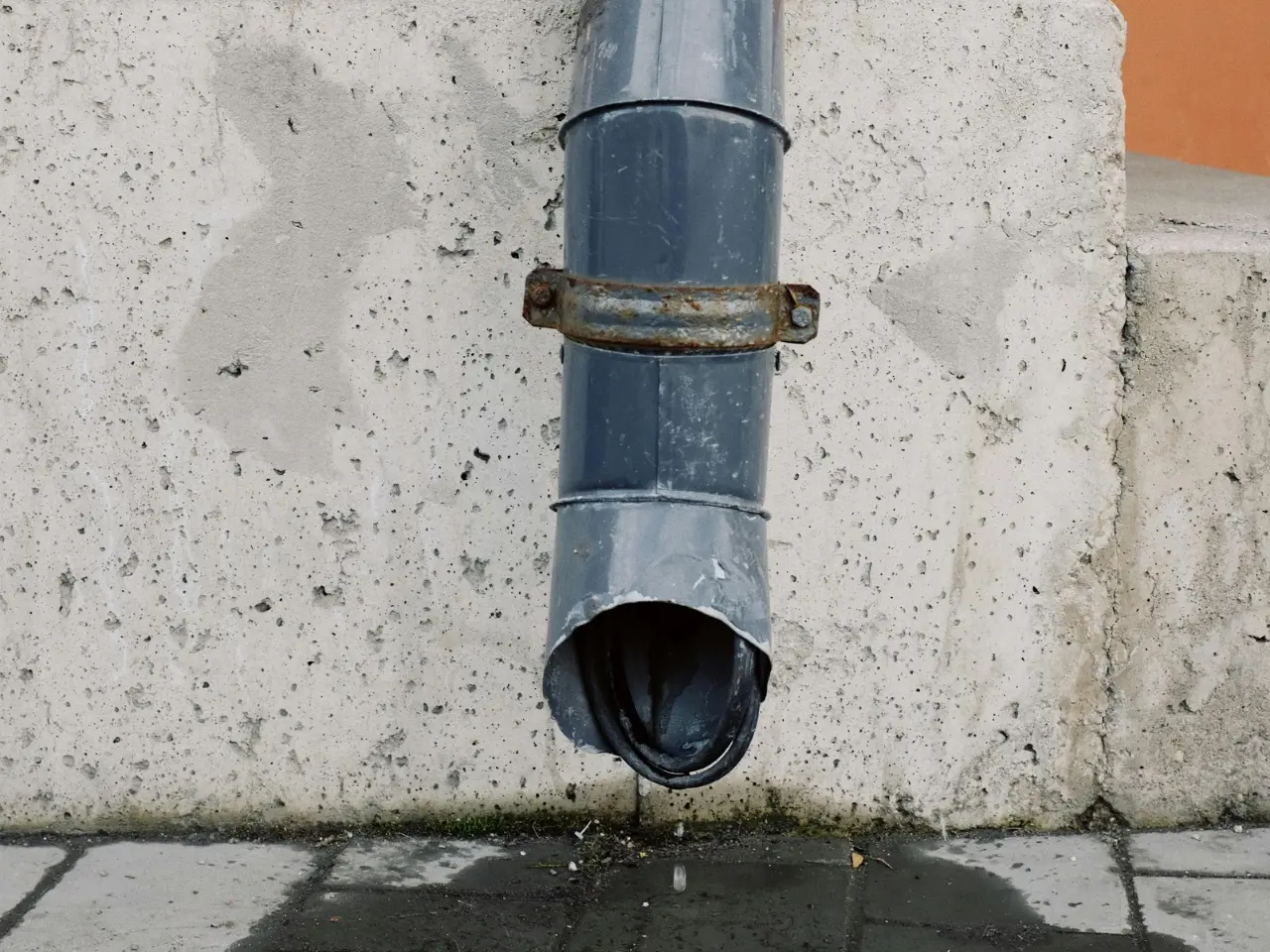
Runoff drains are the type of drain that is best for redirecting water away from your home. They are often connected to gutter systems, collect water from rooftops and other surfaces and guide it away from the structure.
They’re made up of:
- Gutters along the roofline
- Downspouts, which transport water to the ground, are crucial components of reliable drainage systems.
- Underground piping to carry water away from the foundation
These drains are essential for preventing water from soaking into the soil near your basement walls, especially in homes with finished basements.
In terms of maintenance, it is highly suggested that at least twice a year, you clean your gutters and downspouts, and remove leaves and other debris to keep water flowing properly, ensure proper drainage, and avoid any clogs or blockages.
2. Subsurface Drains (French Drains): Preventing Waterlogging
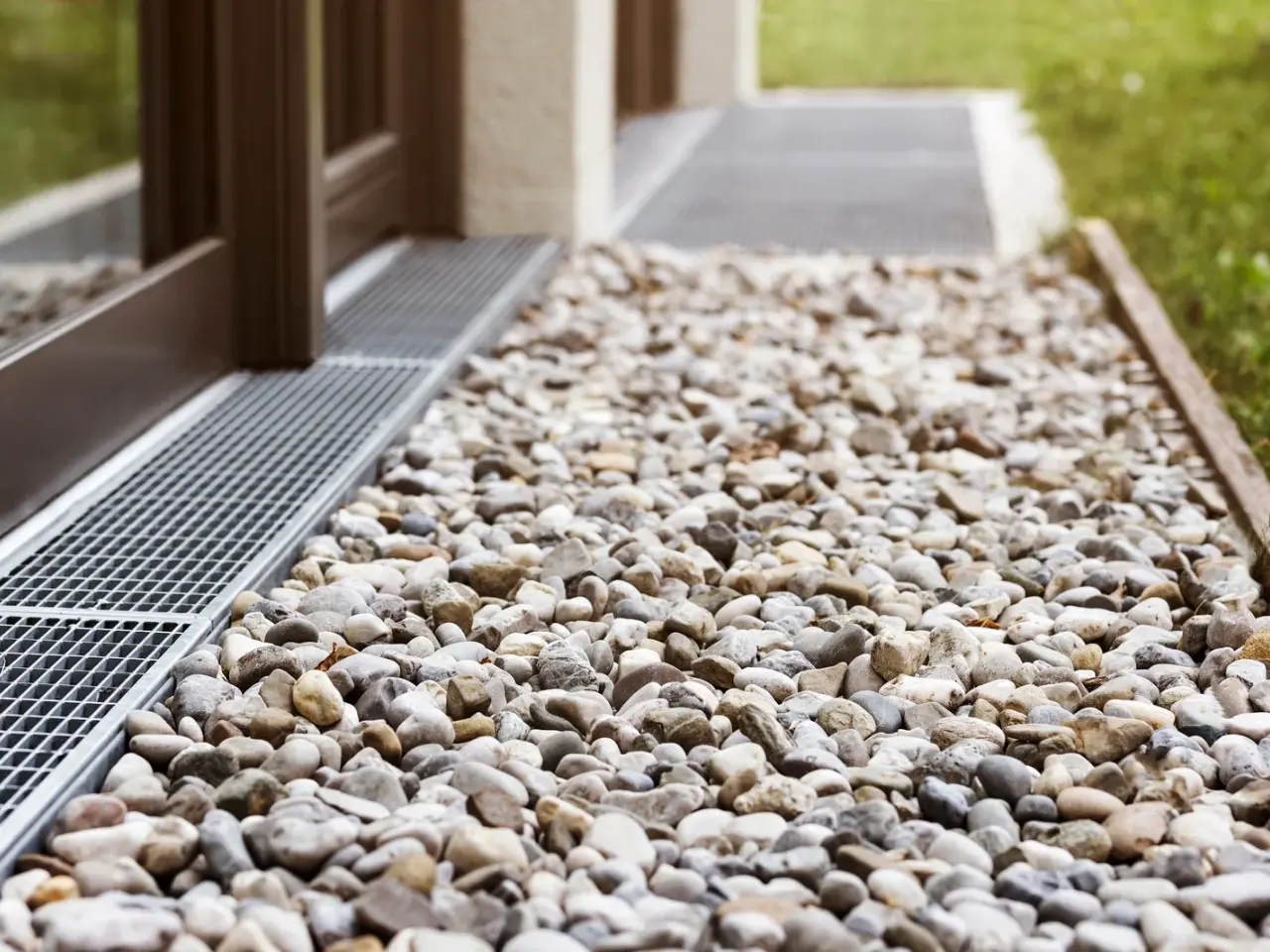
Subsurface drains are also known as “French Drains”. They are the type of drains suitable for gardens, walkways, and areas prone to standing water, as they are designed to move water away from waterlogged areas in your yard.
How they work:
- They dig a trench and line it with gravel.
- A drainage layer at the bottom includes a perforated pipe to guide excess water away.
- The trench is then backfilled with more soil and gravel.
To stop water from pooling near your home, since this can be dangerous as well, French drain redirects it, usually into a dry well or storm line. If there’s a lot of buildup or slow flow, a sump pump is often used to move the water faster.
Pros:
- Prevents soil from becoming overly saturated.
- Prevents damage to your property, like plants and lawns.
Cons:
- More challenging to maintain due to underground placement.
- It can get clogged over time and may need professional cleaning or replacement every few years.
3. Catch Basins: Capturing Surface Water Fast
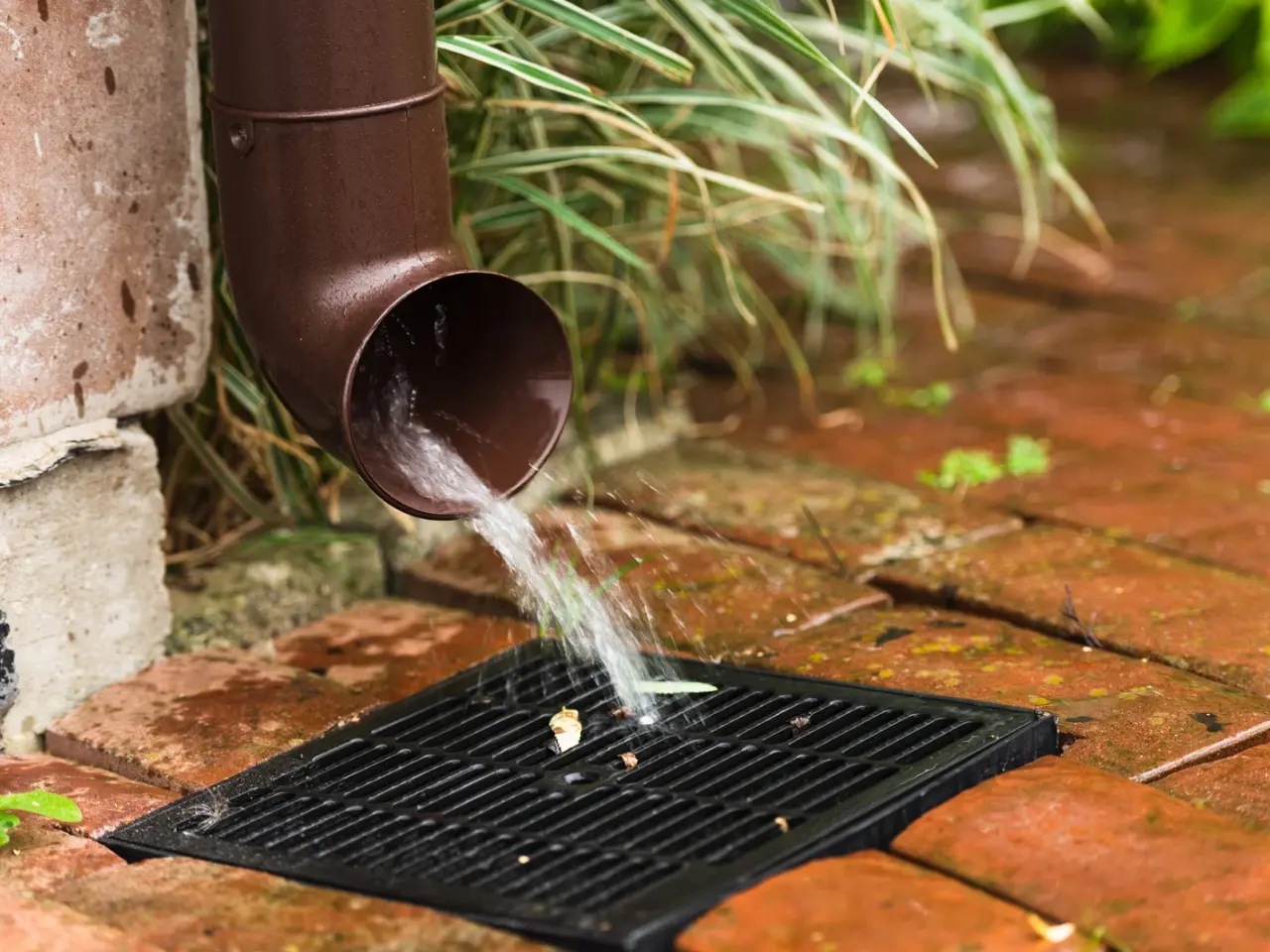
Catch basins are the type of drains that are best for yards, driveways, and patios. They are box-like structures placed in low-lying areas where water tends to accumulate. A grated cover allows water to enter while filtering out leaves and debris. The sump in a collection basin collects silt, debris and other sediments, and the drainage pipe, which is usually connected to a municipal storm system or a French drain, directs water out of the basin.
Benefits:
- Efficiently handles and manages heavy rain water.
- Helps prevent yard or street flooding.
Maintenance:
- Check the basin for buildup and empty the sump as needed.
- Clean the grate regularly to avoid blockage.
Always remember that these drains are practical, but not always aesthetically pleasing. So, consider positioning them discreetly in landscape areas.
4. Foundation Drains: The Core of Home Protection
To help avoid water-related foundation problems, foundation drains are installed along the base of a home’s foundation. Their job is to collect and redirect water away before it reaches the basement walls.
Two Main Types of Foundation Drains
1. Exterior Foundation Drains
These are typically found and placed outside the home’s foundation walls and normally surrounded by gravel to filter water before it reaches the drainpipe.
2. Interior Foundation Drains
Usually used in conjunction with sump pumps, this kind of foundation drain collect and redirect water away from you house and typically positioned beneath the basement floor.
Why They’re Essential:
- Stop erosion around the foundation.
- Reduce pressure from groundwater buildup.
- Prevent damp, leaky, or flooded basements.
Foundation drains are often mandated by building codes in new construction. Even with an effective gutter system, water can seep into the soil, and foundation drains catch what gets through.
5. Gutter Systems: The First Line of Defence
Gutter systems are best for every residential home. Gutters are more than a roof accessory. They collect rainwater and guide it safely away from your house. A complete gutter system includes:
- Gutters that line the edges of your roof.
- Downspouts channel the water down.
- Splash blocks or underground extensions can be used to disperse the water further.
That’s the reason why gutter systems are referred to as the first line of defence because they trap the water from falling directly to the base of your home. Without gutters, the water will fall straight to the base, which may lead to soil erosion or basement leaks.
Maintenance Tips:
- Clean at least twice a year
- Consider leaf guards to prevent debris from entering your gutters and clogging the drainage system.
- Check for proper slope and alignment.
Always take note that a properly maintained gutter system helps prolong the life of your roof, siding, and foundation.
6. Sump Pumps: A Vital Backup
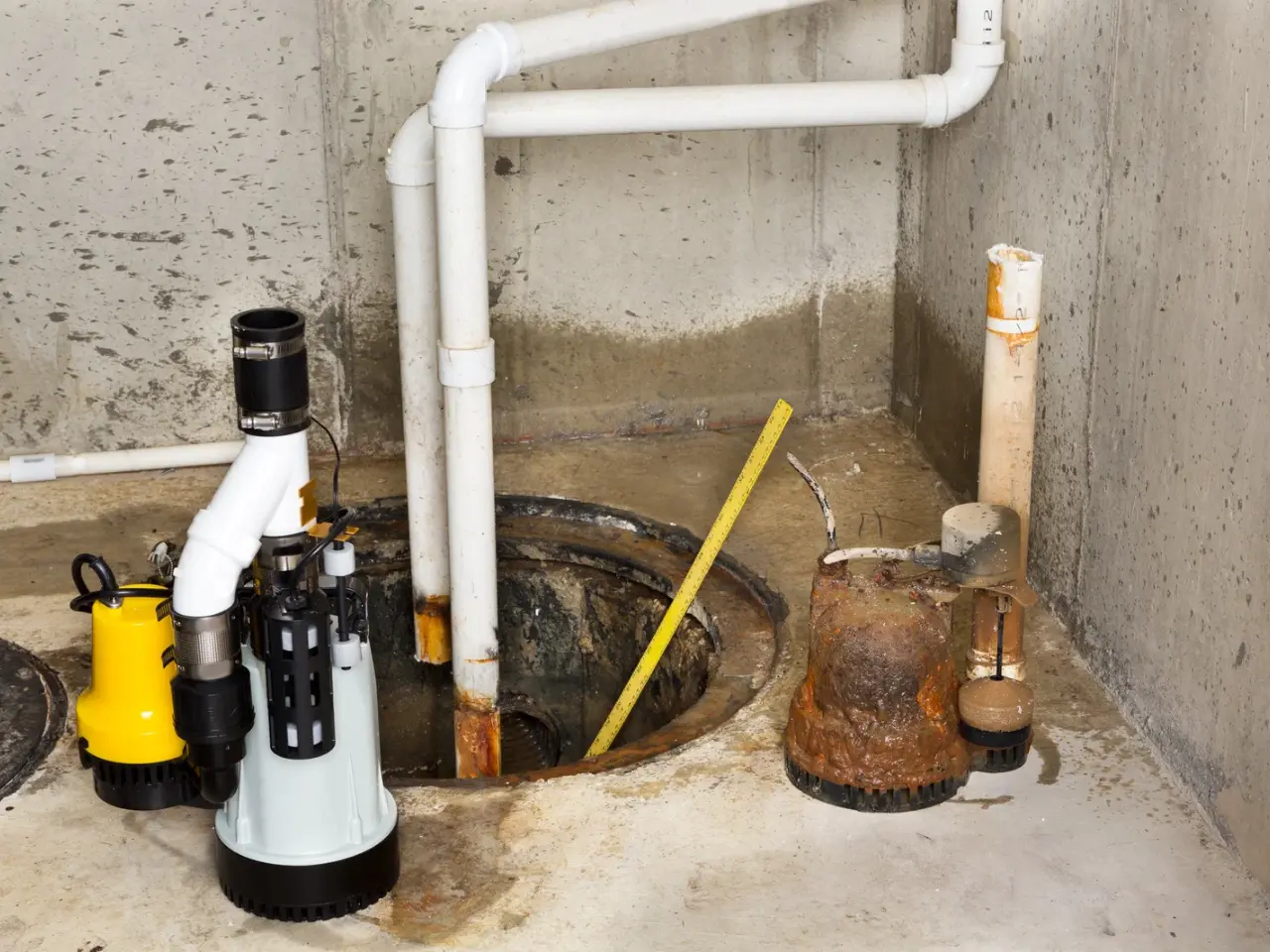
Among the types of drainage system, sump pump is regarded as essential for backup. Despite not being considered as one of the traditional and standard drain types, sump pumps are ideal for house and properties with below-ground levels and are crucial parts of a home drain system. They assist in collecting and pumping water to a specified drainage point when water leaks into the foundation or basement. They served essentially in the house drainage system as the last point of defence.
Key Features:
- Positioned near the low point of the basement’s sump pit.
- Kicks on automatically when water reaches a certain level.
- Pumps the water out and away from the home.
When To Install One:
- If you live in areas prone to heavy rainfall.
- If your basement is below the water table.
- If you’ve experienced water intrusion in the past.
Battery backups or water-powered sump pumps are also available for power outages.
7. Indoor Drainage: Inside the Plumbing You Don’t See
This type of drainage system is designed to manage water and wastewater from sinks, tubs, toilets, and appliances, ensuring efficient water disposal. While much of the focus is on outdoor drainage, the indoor drainage system plays a major role in a home’s plumbing health. This includes various types of systems designed for both residential and commercial use.
- Drain pipe is connected to each fixture.
- P-traps to prevent sewer gases.
- Vent pipes to regulate air pressure.
- The main drain line is attached to either the municipal sewer or septic system.
Proper slope, pipe sizing, and venting are critical for the efficiency of all types of systems. Gurgling noises, slow drains, or sewage odours may indicate problems with the plumbing system.
Drain Care Reminders:
- Dispose of fats, oils, and coffee grinds in the bin, not down your kitchen drain.
- Install strainers in bathroom drains to reduce the chance of hair clogs.
- Instead of chemical cleaners, try enzyme-based treatments or schedule a visit from a trusted plumber.
If you are experiencing drainage issues in your home, please contact us. Please refer to our Drain Cleaning and Drain Repair pages for additional details.
How To Know Which Drain You Need?
If you are building, renovating, or just experiencing drainage problems, ask these questions:
- Do you have a basement? If yes, consider a sump pump and foundation drains.
- Is your yard flat or sloped? If yes, catch basins or French drains are highly recommended.
- Do you see pooling near your downspouts? Then, extend them or add a splash block.
- Do you experience frequent backups? Your indoor drainage might be the problem.
A professional plumbing assessment can provide a clear picture of your current drainage system and identify the necessary improvements to ensure optimal performance.
House Drainage Systems Need Care and Planning
Using the appropriate components in the right places and maintaining them are essential to the optimal performance of a house drainage system. In addition, every component, from sump pumps to runoff drains, is essential to maintaining the safety and moisture content of your home.
If you’re unsure about your house drainage system setup, or you’ve been noticing warning signs like pooling water, damp spots, or musty odours, it’s time to call the professionals. Don’t wait any longer and look for a professional draining and plumbing expert, just like Absolute Draining & Plumbing.
Absolute Draining & Plumbing offers expert drainage solutions for all types of drainage issues in the Greater Toronto Area. Whether you need a new French drain, foundation protection, or sump pump easy installation, their licensed plumbers are ready to help.
Need help now? Contact us via form or you can call us at 416-252-5557 for a free consultation and get peace of mind that your appliance is in expert hands.




